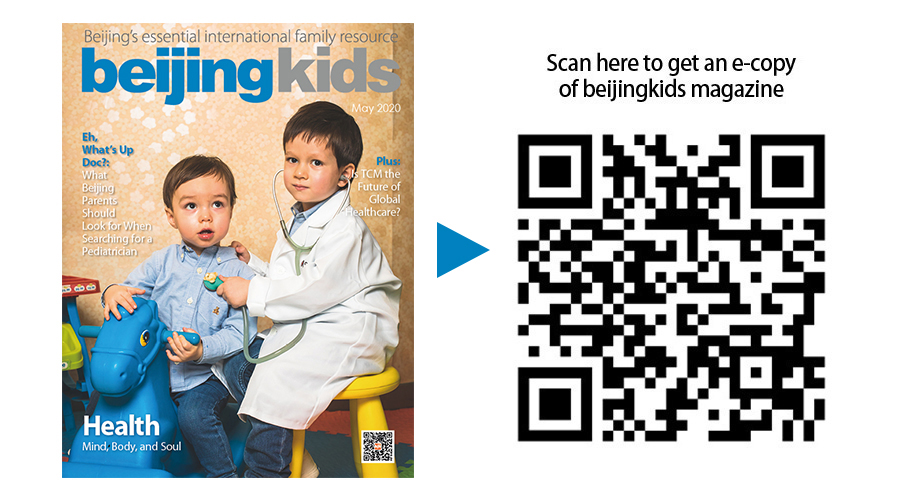One of the hardest negotiations I ever had to do as a child was trying to convince my mom to get me a pet. I absolutely loved furry creatures, but my mom was less enamored by them. As a poor alternative, she got me a bike. That didn’t stop me from petting stray dogs, spending as much time as I could with cats and dogs owned by my relatives, and praying that one day my mom’s allergies to fur would disappear, and on that day, she would finally say yes to a cat, at the very least.
My desire for a furry pal is far from unique. The Internet is replete with adorable reaction videos of kids getting their first puppy, of family cats and dogs watching over newborn babies, gently licking and cuddling them, and raucous play with their little human buddies. It is the desire of many parents to have their kids grow up with at least one pet in the house. And in most cases, parents have few to no reservations about getting pets for their kids.

I’m all ears
But in China, the decision to own a pet, especially in a house with a young child or expectant mother, isn’t quite as easy. There is a long-held belief of household pets being potentially harmful to the health of the expectant mother or infant. This belief leads many pet owners to make the difficult decision of relinquishing ownership of their pets, even before the baby arrives. Simply put, when a child comes into the picture, the family pet must exit stage left.
But is this belief entirely irrational and unfounded? Or do those who still cling on to this belief have legitimate claim to their fears?
Obstetricians and pediatricians in China often advise parents to get rid of pets in anticipation of a newborn. Coming from medical professionals, this is a piece of advice parents are likely to take to heart. The common fear is pets might transmit zoonotic diseases to their owners. Dispelling this fear, however, does little to comfort pet owners as they are faced with worrying statistics which might make them think twice about having their furry friends around expectant mothers and young children.
China ranks second according to the World Health Organization (WHO) in terms of rabies fatalities annually, with about 2,000 to 3,000 deaths reported. On average 95% of these deaths are linked to exposure to dogs. Moreover, 50% of all global rabies-related deaths are children under the age of 15.

Who’s a good boy?
Such statistics might be a cause of worry for parents with young children. Kids are impetuous by nature and might treat animals in a way likely to result in injury. They are far more likely to rough-house with their beloved furry companions or even startle them. They are also unable to gauge when their furry pets are no longer in a playful mood. All this might cause an animal to bite or nick the child. Afterward, fearing punishment, children might not tell their parents about an animal attack, however minor or severe. And when their parents find out, it might already be too late.
There is also the less worrying, but no less serious possibility of allergies. Kids could also suffer from allergic reactions, although studies have shown early exposure to animals could build up immunity in the child and reduce the risk of these reactions from occurring. There are also hygienic concerns. Toddlers and young children are not fastidious about the surfaces they play on or putting foreign objects into their mouths. As such, kids can touch or pick up animal waste and ingest it without their parents being aware. They are also prone to putting their hands in their mouths and could do so after they have come in contact with a contaminated surface. Parents keeping a close eye on their kids when playing with animals and ensuring they wash their hands thoroughly after play could help avoid bites, nips, and chances of ingesting animal waste. But for some parents, the risks far outweigh the efficacy of preventative measures.

Here kitty, kitty, kitty
As far as parasitic diseases, toxoplasmosis is of great concern, especially for pregnant women. Toxoplasmosis can have harmful effects on the growing fetus, and can also pose a serious health risk to immunocompromised individuals. Cats are the main carriers of this protozoan parasite. They pick it up from eating infected prey or ingesting contaminated soil. It is, however, far more likely for humans to get toxoplasmosis through other means, such as eating undercooked meat, unwashed vegetables, or also coming in contact with contaminated soil. Toxoplasmosis can also be ruled out as a threat from cats by performing a simple blood test. Other practices such as thoroughly washing fruits and vegetables, cooking meat, wearing gloves when gardening, not feeding your cat raw meat, and cleaning out litter boxes daily while wearing gloves are fairly effective in reducing the risk of toxoplasmosis infections.
There is also a widely held misconception of non-furry animals being a safer option to humans than their furry counterparts. However, humans still run the risk of contracting salmonella from frogs, turtles, and other reptiles. These animals can also have parasites that can be passed on to humans.
There are no set protocols for those who wish to relinquish their pets due to health or other concerns. The usual course of action is for pet owners to pass pets on to relatives or close friends, and in other cases, give them up to animal shelters. If the abandoned animals are older, they are less likely to get adopted. Prospective families with children tend to prefer puppies and kittens. To counter any misinformation, there are various activism projects throughout the country teaching both children and adults about responsible pet ownership, and how to keep their furry friends and themselves safe and happy.
Keeping up to date with vaccines is essential in preventing possible infections and infestations in animals. Admittedly, training a pet could take a long time, but it is well worth the effort. They are far easier to handle and are less likely to cause injury to young children. Keeping the house clean is the final component of the recipe for successful pet ownership. Disinfecting surfaces, emptying litter trays, washing your and your children’s hands after playing with the pet, and making sure the litter is disposed of using gloves and away from the family compound will go a long way in reducing animal to human cross-contamination.
We need to remind ourselves why it is so easy to fall in love with our animal companions, whether furry or otherwise. They provide unconditional love, encourage us to keep active, and are an endless source of entertainment. Medically, owning a pet has been shown to reduce blood pressure, cholesterol and triglyceride levels in the body. They can be a fantastic tool to teach children non-verbal cues when children learn to meet the needs of animals that cannot speak. And ultimately, when a beloved pet dies, this offers parents a wonderful opportunity to teach children about the cycle of life and death. Granted, pets can be incredibly demanding, messy and need constant care, but they can also be immense sources of joy. Dogs can live well beyond 17 years, while cats can hit up to 20 years, so owning a pet is a life-long commitment, but one well worth pursuing.
KEEP READING: Beijing Pet Sitting Services You Can Trust
Source: Veterinary information in this article was provided by Dr. Anna Gazdag, ICVS Foreign Consultant Veterinarian, Dr. Cao Yuan Zhao, ICVS Veterinary Surgeon, Mary Peng, CEO and Founder, ICVS Animal Hospital ICVS Beijing. If you need any information regarding animal health, vaccination and animal export requirements, then visit www.ICVSASIA.com
Photos: Unsplash
 This article appeared in the beijingkids 2020 May issue
This article appeared in the beijingkids 2020 May issue




